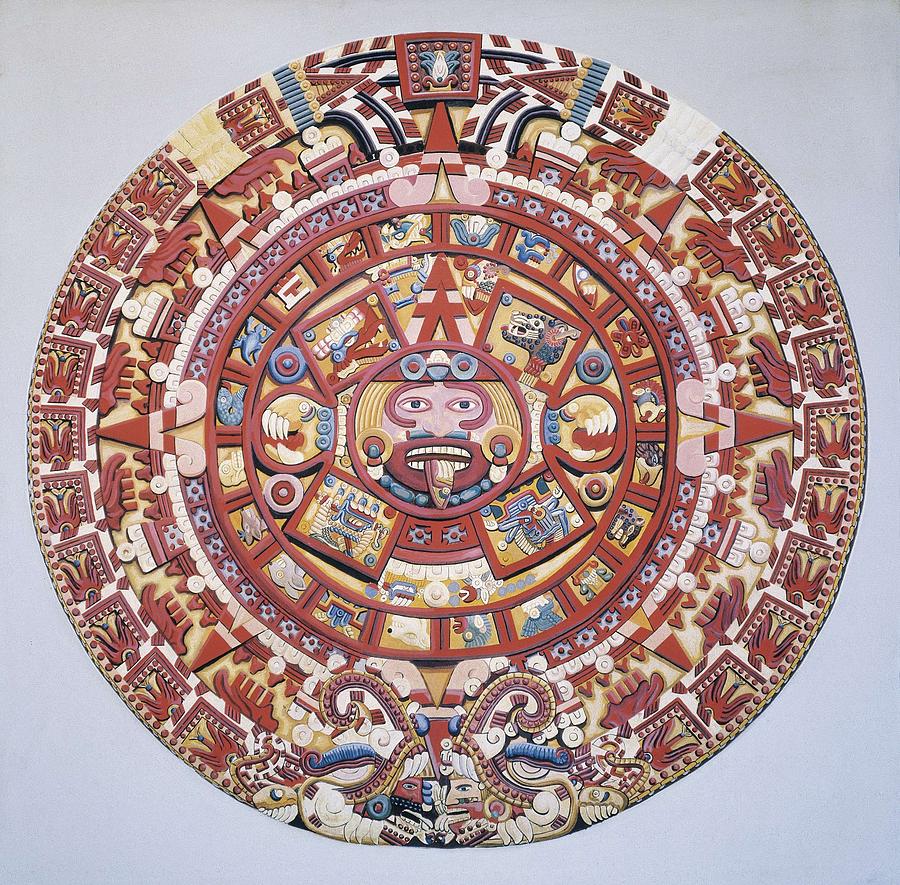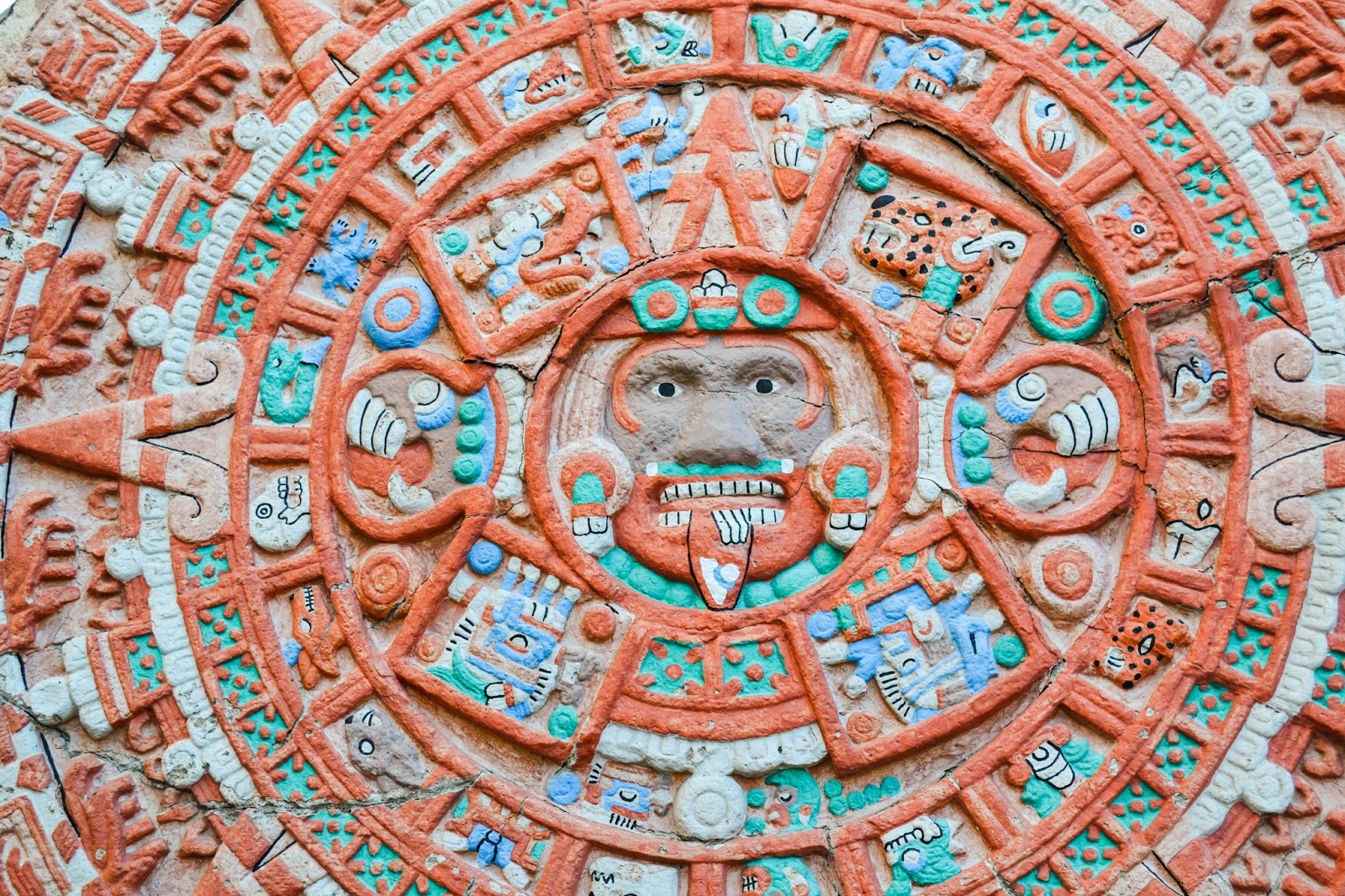Where Was The Aztec Calendar Found Web Dec 6 2023 nbsp 0183 32 The Sun Stone or The Calendar Stone Aztec reign of Moctezuma II 1502 20 discovered in 1790 at the southeastern edge of the Plaza Mayor Zocalo in Mexico City stone unfinished 358 cm diameter x
Web Feb 5 2019 nbsp 0183 32 Sun Stone or Aztec Calendar Stone found in Tenochtitlan in 1789 Mexico Azteca civilization 15th century De Agostini G Sioen Getty Images By Nicoletta Maestri Updated on February 05 2019 Web Oct 27 2009 nbsp 0183 32 The Aztec calendar common in much of Mesoamerica was based on a solar cycle of 365 days and a ritual cycle of 260 days the calendar played a central role in the religion and rituals of Aztec
Where Was The Aztec Calendar Found
 Where Was The Aztec Calendar Found
Where Was The Aztec Calendar Found
http://dlrcreativityintheclassroom.files.wordpress.com/2013/02/1500-aztec-calendar.jpg
Web Humanities Encyclopedias almanacs transcripts and maps Aztec Calendar Stone Aztec Calendar Stone views 2 607 227 updated Aztec Calendar Stone The Aztec Calendar Stone is the most widely recognized emblem of pre Columbian Mesoamerican civilization
Pre-crafted templates offer a time-saving service for developing a varied variety of files and files. These pre-designed formats and designs can be utilized for various personal and expert tasks, consisting of resumes, invitations, leaflets, newsletters, reports, presentations, and more, simplifying the content production procedure.
Where Was The Aztec Calendar Found
Travelin Man Aztec Calendar Stone Of The Sun

Aztec Calendar Mesoamerican Tonalpohualli Sun Stone Britannica

Aztec Calendar Image

CNCnutz Making An Aztec Calendar Part 1 Episode 149

Aztec Calendar Aztec Calendar Stone Decor

Called The Most Likely Cause Of Death Of The Aztec Civilization Earth

https://en.wikipedia.org/wiki/Aztec_calendar
Web The Aztec sun stone and a depiction of its base The Aztec or Mexica calendar is the calendrical system used by the Aztecs as well as other Pre Columbian peoples of central Mexico It is one of the Mesoamerican calendars sharing the basic structure of calendars from throughout the region
+Disc_edited.jpg?w=186)
https://www.worldhistory.org/article/896
Web Apr 25 2016 nbsp 0183 32 The Aztecs used a sacred calendar known as the tonalpohualli or counting of the days This went back to great antiquity in Mesoamerica perhaps to the Olmec civilization of the 1st millennium BCE It formed a 260 day cycle in all probability originally based on astronomical observations

https://en.wikipedia.org/wiki/Aztec_sun_stone
Web The monolith was carved by the Mexica at the end of the Mesoamerican Postclassic Period Although the exact date of its creation is unknown the name glyph of the Aztec ruler Moctezuma II in the central disc dates the monument

https://www.britannica.com/science/calendar/The...
Web Aztec calendar stone in the National Museum of Anthropology Mexico City The calendar discovered in 1790 is a basaltic monolith It weighs approximately 25 tons and is about 12 feet 3 7 metres in diameter

http://www.aztec-history.com/aztec-calendar.html
Web The Aztecs actually used three calendars that were probably developed by the one of the earliest of the Mesoamerican people the Olmecs They were used to equate the current patterns of the sky and daily Aztec life just like they were probably used to direct the events of the early Olmecs
Web Mexico City for over 300 years Then in 1790 renovations began on the central square Zocalo of Mexico City On December 17th the massive carving was unearthed renewing interest in Mexico s ancient cultures It was the Aztec calendar stone or more properly the Cuauhxicalli Eagle Bowl Web Apr 16 2020 By Mia Forbes BA in Classics Aztec Calendar closeup view Since its discovery in 1790 the Aztec Calendar or Sun Stone has intrigued archaeologists historians and conspiracy theorists alike
Web Nov 12 2023 nbsp 0183 32 What Is the Aztec Calendar The Aztec calendar most of us recognize is the Xiuhpohualli a disc with concentric rings of symbols It is based on the Aztec sun stone an ancient Mesoamerican artifact found buried in Mexico City in 1790